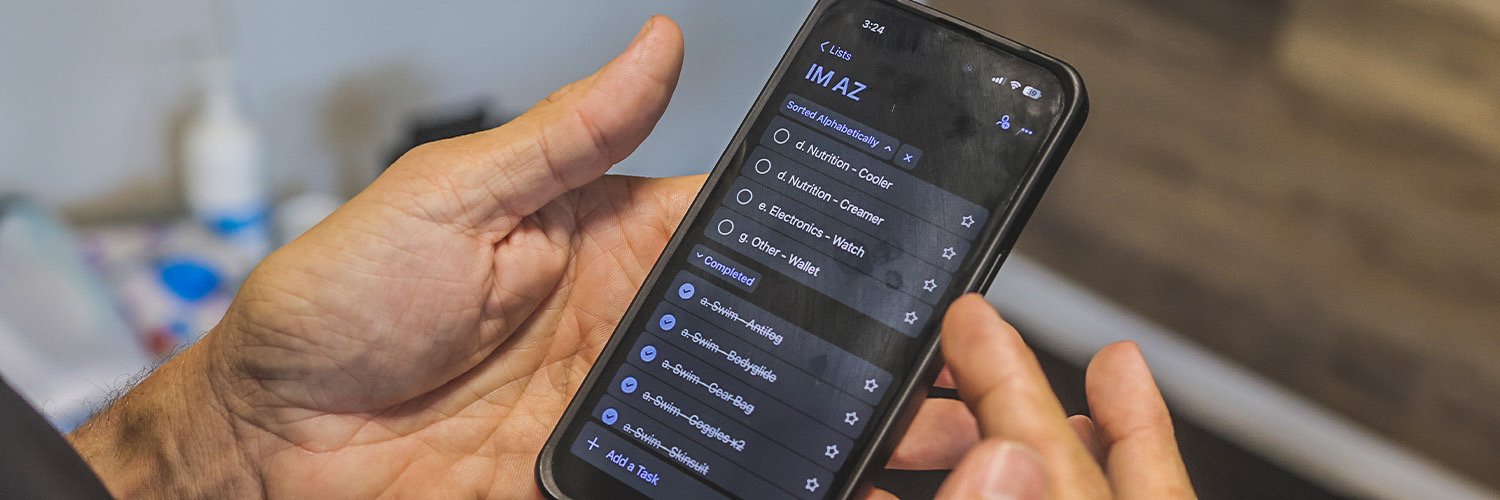The Importance of Creating a Triathlon Race Checklist: Preparing for Success
Participating in a triathlon is a unique and exhilarating experience, blending the disciplines of swimming, cycling, and running into a single, demanding race. With so many elements involved, preparing effectively is essential to perform your best on race day. One crucial tool that seasoned triathletes swear by is a triathlon race checklist. This simple yet powerful resource ensures nothing is left behind and can dramatically reduce stress, allowing you to focus on the race ahead. Here’s why a triathlon race checklist is essential and what it should include.
1. Reduces Pre-Race Stress and Anxiety
With a checklist, you can systematically review all the items you need to bring, allowing for a smoother, more organized pre-race experience. This is especially useful if you feel pre-race jitters—knowing you have all the essentials packed and ready can help you feel more in control and relaxed.
A good checklist will also include specifics beyond gear, like race registration documents, hotel reservation details (if traveling), and reminders for nutrition and hydration needs. This completeness makes it easier to avoid the classic worry of "Did I forget something?" and gives you peace of mind to focus on what realers: your performance.
I use the Microsoft To Do app
2. Ensures Essential Gear is Accounted For
A triathlon involves unique gear requirements for each of the three disciplines. Forgetting an item—even something seemingly minor—could lead to a challenging race experience or, worse, a missed start. Here’s a breakdown of how a checklist helps you cover the essentials:
Swim Gear: A wetsuit, swim cap, goggles, and body glide are critical for the swim portion. Forgetting a wetsuit could put you at a serious disadvantage, especially in colder water. A checklist helps ensure these items are accounted for.
Bike Gear: The bike portion requires several items, from your bike itself to your helmet, cycling shoes, and a race number belt. Triathlon-specific gear, like aerodynamic helmets or bike hydration systems, is essential for competitive races, and a checklist helps you account for each of these specialized items.
Run Gear: Running shoes, a hat or visor, and any necessary hydration or gels should be part of the checklist. While these items might seem straightforward, they’re critical for a successful transition and an efficient run leg.
3. Supports Smooth Transitions
The importance of seamless transitions in a triathlon can’t be overstated, as time spent fumbling with gear in transition can add up. A well-organized checklist should include items needed for each transition, like a small towel to dry off after the swim, sunscreen, and a quick-access snack.
Placing these items in designated bags, marked according to the transition they’ll be used in, is a smart way to streamline your transitions. Reviewing the checklist during setup can also help ensure that all transition bags contain everything you need, in the correct order, and are easy to reach.
4. Ensures a Focus on Nutrition and Hydration
Triathlons, especially longer-distance events, require careful planning of nutrition and hydration. A checklist ensures you don’t miss packing essential items like water bottles, electrolyte drinks, gels, or snacks. It’s easy to overlook these items, but having a checklist lets you see nutrition needs laid out and review your plan to ensure everything is covered.
5. Provides a Reliable Backup for Travel
Many triathletes travel for races, which increases the chance of forgetting something essential. Creating a triathlon race checklist is especially useful when preparing to pack for travel. Here’s how a checklist supports travel preparation:
Prevents Last-Minute Panic: Packing items like spare tubes, CO2 cartridges, and specialty nutrition items before you leave ensures you don’t have to scramble to find replacements in an unfamiliar location.
Double-Checks Essentials: Reviewing your checklist after arriving at the race location helps you feel confident that everything traveled safely, allowing time to replace lost or damaged items.
6. Helps You Stay Mentally Focused and Confident
Going into race day with confidence is just as important as physical preparation. When you’re not worried about whether you’ve packed all the essentials, you can focus on mental strategies for the race. A checklist allows you to mentally walk through each triathlon stage, considering your plan for each transition and preparing for various scenarios.
This mental preparation is enhanced when physical evidence (your checklist) confirms that all the groundwork has been laid. The process becomes more about execution than troubleshooting, letting you be fully present and calm on race day.
What to Include in Your Triathlon Race Checklist
While each athlete’s checklist may vary, here’s a comprehensive overview of some essentials to include:
Race Registration and ID: Bib number, ID, and registration confirmations.
Swim Gear: Wetsuit, goggles, swim cap, body glide, and a towel.
Bike Gear: Bike, helmet, shoes, sunglasses, pump, spare tubes, CO2 cartridges, tire levers, and hydration systems.
Run Gear: Running shoes, socks, visor/hat, race belt, gels/snacks.
Transition Items: Towels, sunscreen, body glide, extra nutrition, and any clothing changes needed.
Post-Race Essentials: Warm clothes, recovery snacks, flip-flops, and necessary personal items.
Making a Checklist That Works for You
Your checklist should reflect your personal needs and race-day routine. Consider breaking it down by categories or transitions, as this approach can help prevent forgetting smaller items while keeping each race phase organized. Digital checklists, like those on your phone or tablet, allow for easy updates and can be saved as templates for future races.
Final Thoughts
A triathlon race checklist is a small investment of time that can have a big payoff. By creating a thorough, customized checklist, you equip yourself to handle the race logistics seamlessly, maintain mental clarity, and focus entirely on performing at your best. After all, when you’re standing at the starting line, knowing that everything is ready frees you to enjoy the thrill of the race and give it your all.

